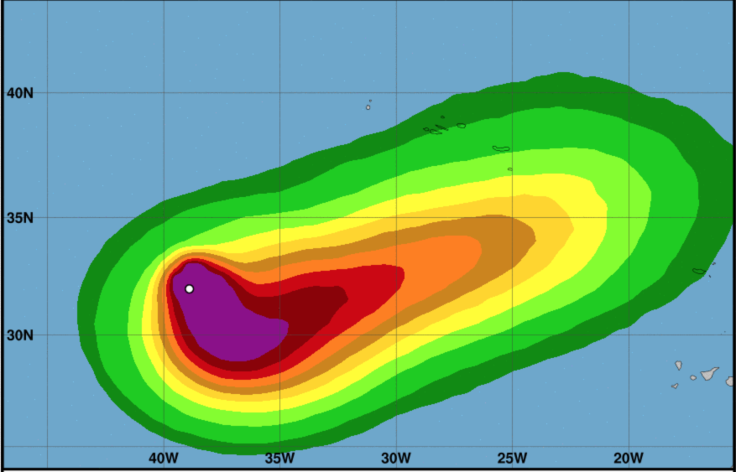Ophelia Update: Storm To Become Hurricane, Would Make Record Breaking Season

Tropical storm Ophelia is set to become a hurricane this week — as soon as Wednesday, according to the National Hurricane Center (NHC). If the storm becomes a hurricane it could tie a record set over 100 years ago.
Currently, Ophelia is in the middle of the Atlantic and poses no threat to land. By becoming a hurricane the storm would be the tenth consecutive storm to grow to hurricane strength this year. Hurricanes are measured on a five-category scale by wind speed. Category 1 hurricanes are between 74 and 95 mph.
The storm is 2000 miles away from Florida and just under 800 miles west of the Azores Islands, far off the coast of Portugal. The storm is set to move west from its current position towards Europe, according to the NHC.
The last time ten storms consecutively became hurricanes was 1893, according to the Miami Herald. It also happened in 1878 and 1886. Satellites were not around then, so some storms may have been missed.
This hurricane season has had 15 named storms (Ophelia is the 15th), five major hurricanes and two Category 5 Hurricanes, which are over 157 mph. This year’s hurricane season is above average for activity, and is already one of the top ten busiest seasons ever, according to the Weather Channel.
Using the National Oceanic and Atmospheric Administration’s (NOAA) accumulated cyclone energy scale, which measures the wind energy generated by storms. This year is already the fifth highest since 1951 — and it isn’t over yet.
The U.S. has seen major devastation from this year’s crop of hurricanes. This season might top 2005, a particularly devastating year, for damage done by Hurricanes. Approximately $143.5 billion worth of damage was done in the U.S. in 2005, a year which included Hurricane Katrina. New Orleans was decimated by Katrina, a storm that killed over 1,200 people.
Hurricanes Harvey and Irma alone have caused an estimated $290 billion, according to AccuWeather.
© Copyright IBTimes 2024. All rights reserved.











